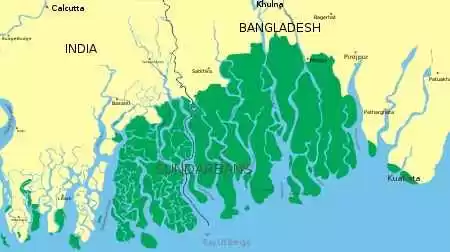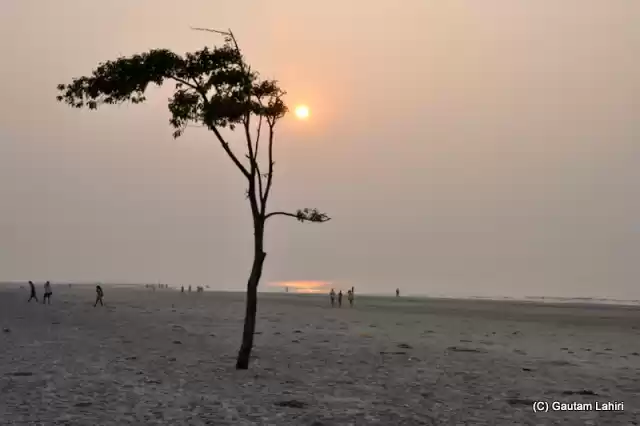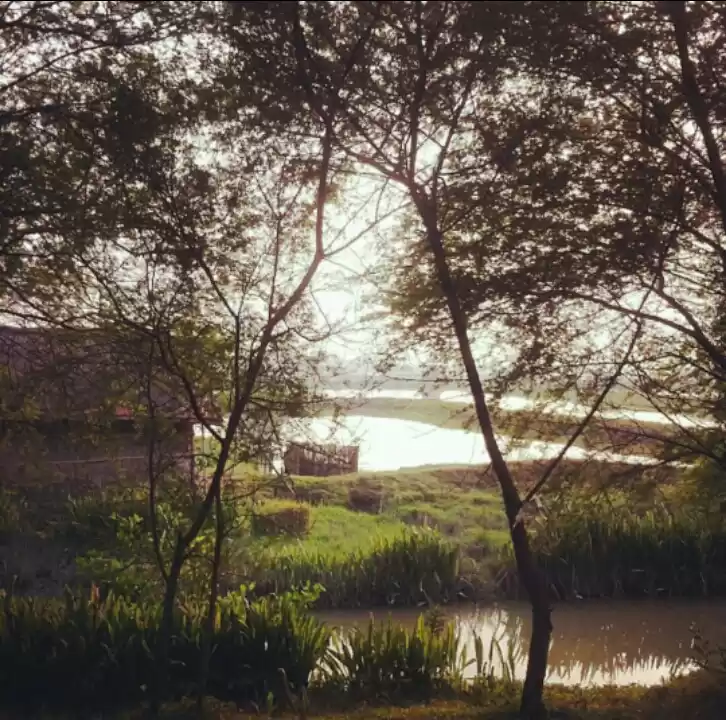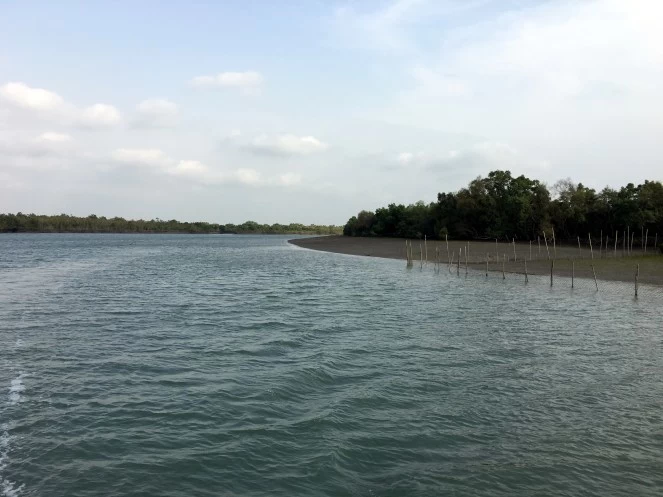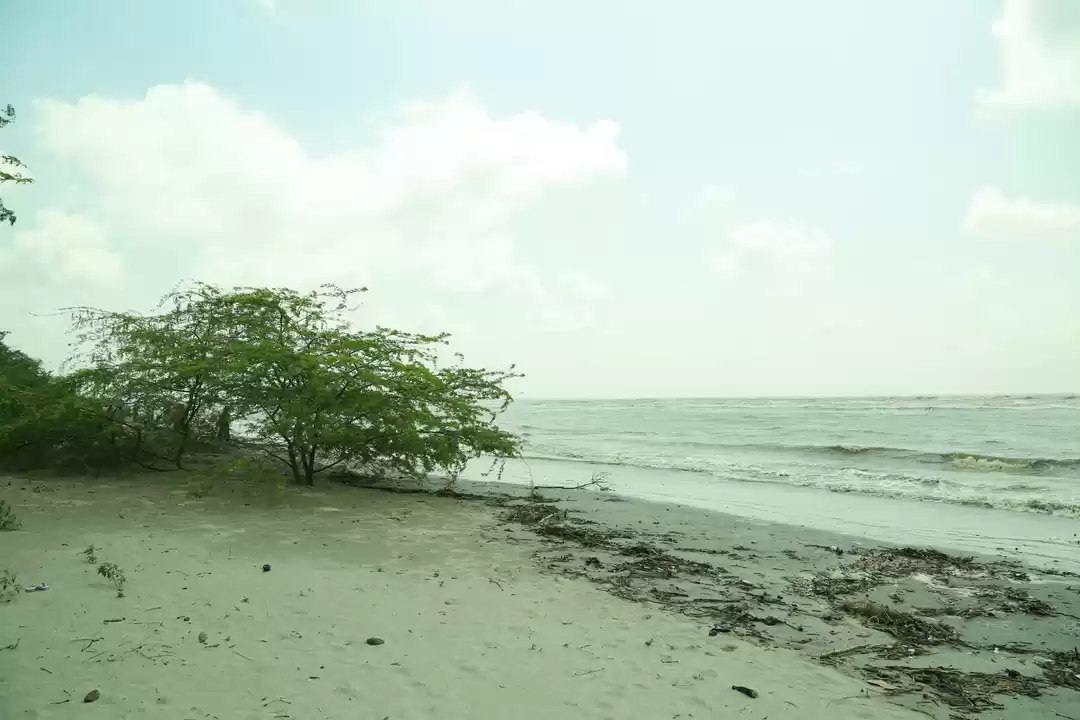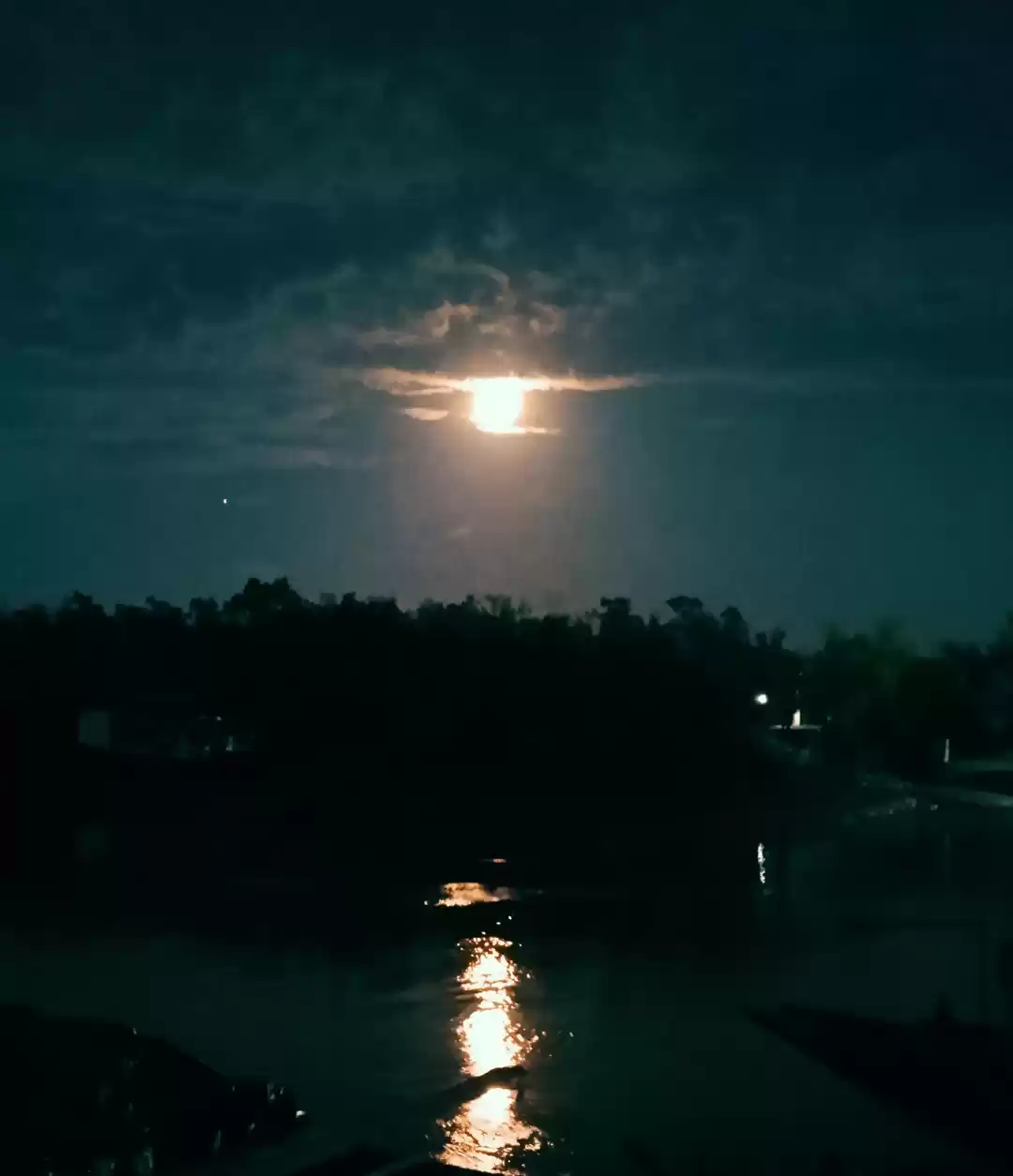
“Quick! Look to your right,” I shouted, catching a glimpse of the yellow and black stripes amidst the mangrove forest behind the swampy land. The steamer tilted to the left as all its twenty passengers moved to the right side to see the majestic beast who slowly strolled out in the clearing at a distance of fifteen yards from our steamer. Big boss, as the forests guards call him, at the age of 18 years was the oldest and largest Royal Bengal tiger of the Sundarbans delta, shared by India and Bangladesh. We were spellbound at the majestic creature who seemed to be enjoying its afternoon saunter without a care in the world. I could feel the spine-chilling thrill when Big Boss looked straight into our steamer. We were at a safe distance in the river since man-eaters of Sundarbans can only jump upto ten yards from the land. But not the small dinghy with two fishermen who were coming out of the canal after their daily catch.
I took in the scene unfolding in front of my eyes, the largest man-eater walking towards the edge of the swampy mangrove forest, where the canal cut across and two humans in a rowboat who could hardly match the speed of the tiger. The Sarang (pilot) of our steamer immediately changed the direction to go into the canal between the feline and the fishermen. Now we were only ten yards away from the land, crouched down, awaiting the worst. Big Boss now has twenty-two choices for his afternoon spread but a big boat like ours seemed to have foiled his meal plans. It was difficult to jump on to our steamer compared to the dinghy. He looked visibly irritated at our interference and went back inside the mangrove forest, postponing his hunting plans.
Sighting of a man-eater is rarest of rare in the Sundarbans, with the dwindling number, if you are a tourist. However, if you are a fisherman or a honey-collector, trying to make ends meet in these infertile islands, then every single day you live is a blessing. All the tourists in the steamer started settling down from such a high adrenaline experience. Simba, our tourist guide, with a sigh looked straight ahead and nonchalantly blurted out, “Big boss claimed my cousin last week from the same canal”. All of us looked at him shell-shocked. “You can still see the red flag perched in the tree there”. I noticed a red piece of cloth hanging form one of the bushes. As we advanced further in the canal, the red clothes kept on increasing. “Every boat goes out with a red cloth while fishing. When a life is claimed by the man-eaters, the other person on the boat marks the area with the cloth.”
The deltas are far more haunting than one can imagine. Simba went on to narrate gruesome incidents those had taken many a lives in the mangroves. It is a pattern; the man-eaters locate their prey stealthily and pounce on to the boat swooping the man by the neck at the rear end and jump in the water. The man-eaters are excellent swimmers hence no man could save himself from such a dangerous ordeal. “Why do you live here waiting for your end?’’ aghast I asked. “ This is our birth land Madam, we have all lived here for generations, moreover our skills are only fishing and gathering honey. We do not have enough money to move out. Frankly, no one has ever thought of leaving his motherland. We know this is how God takes us when our life on Earth ends”.
We were astounded at his words. Such a gory fate and everyone have resigned to theirs. We alighted at a small island beautifully woven in the middle of two streams. My heart broke when Simba went on to explain the significance of the island. All the residents were widows and children who have lost their husbands and fathers to the same fate.
I returned home from the Sundarbans trip with a heavy heart. While I travel to escape the daily grind, a huge population live in fear of their reality every single day.


